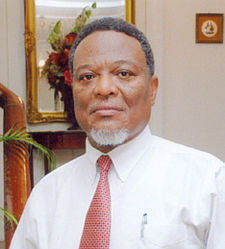By Prime Minister Samuel Hinds –
The Emiratis seem persuaded that fossil fuels for energy can only get costlier as negative impacts on the environment are sanctioned. They recognise that while petroleum products could, for a long time, be exported as the energy source of choice in many situations, and as a chemical feedstock, they could reduce their own consumption significantly. They are working to be among the leaders in the new green-technology world. Their oil could be too costly for them! A “Future City”, “Masdar”, a zero-carbon city, was being built, learning as one goes, on the outskirts of Abu Dhabi city. An initial 10 mega watt photo-voltaic farm was already in place. In principle, there will be a network of driver-less train units underground and the streets aboveground will be pedestrian.




